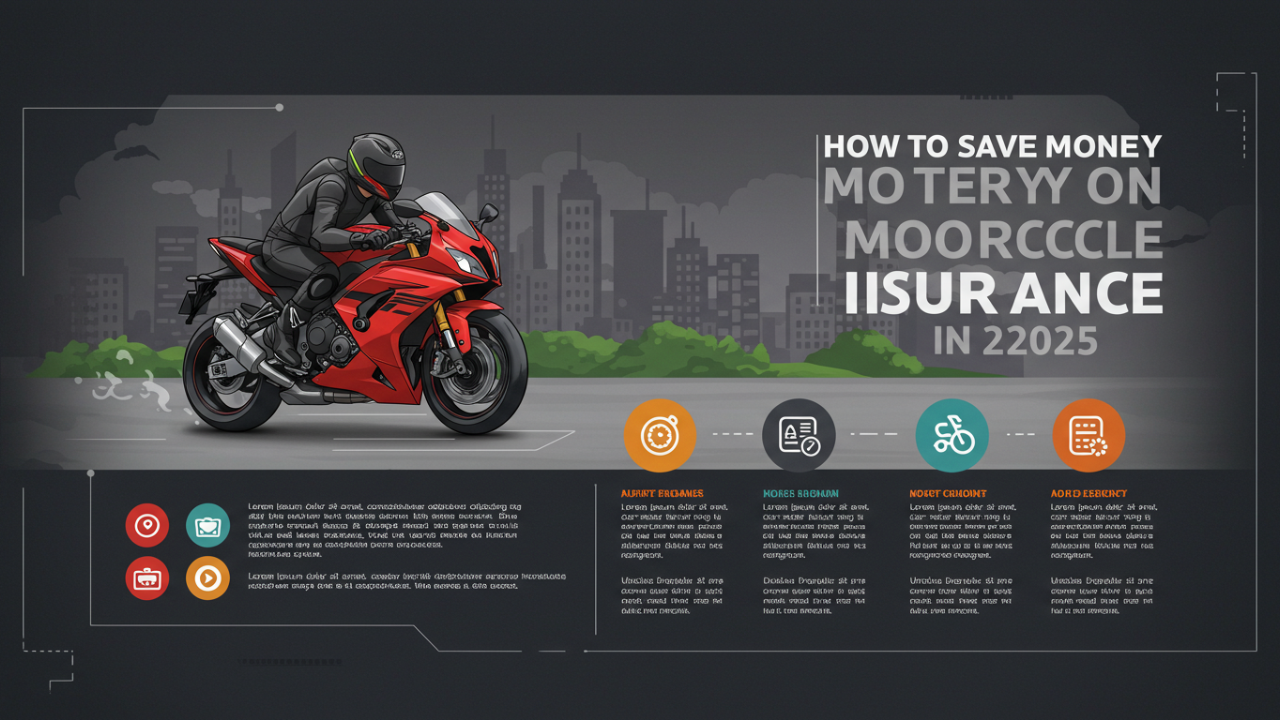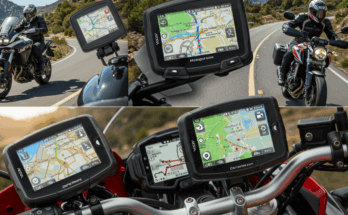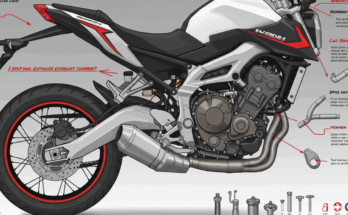Picture this: You’re cruising down a winding road, the wind whipping past, and your bike feels like an extension of yourself—smarter, safer, and more thrilling than ever. That’s not just a daydream anymore. In 2025, motorcycle technology has hit new heights, blending cutting-edge innovation with the raw joy of riding. From electric powerhouses to radar-guided safety systems, this year’s reveals have riders buzzing with excitement. So, let’s dive into the latest motorcycle tech unveiled in 2025—from the garages of the world’s top manufacturers to your handlebars.
Why Motorcycle Tech Matters in 2025
Riding a motorcycle has always been about freedom, but today, it’s also about smarter choices. With traffic getting crazier and environmental concerns growing, manufacturers are stepping up. This year’s advancements aren’t just flashy gadgets—game-changers making riding safer, greener, and more fun. Whether you’re a weekend warrior or a daily commuter, these innovations are here to transform your two-wheeled adventures. Let’s break it down.
Electric Motorcycles Take Charge
Batteries That Go the Distance
Electric bikes aren’t new, but 2025 has supercharged them. Take Zero Motorcycles, for example—they’ve rolled out updated lithium-ion battery packs that promise over 200 miles on a single charge. Imagine hitting the highway without that nagging range anxiety! My buddy Jake, an EV bike enthusiast, said, “I rode from Portland to Eugene last month, and I didn’t even sweat the battery. It’s a game-changer.”
Research backs this up—Battery University reports that modern lithium-ion cells are 20% more energy-dense than last year’s models. That means longer rides and quicker charges (some hitting 80% in under 45 minutes with fast chargers). Brands like Energica and Harley-Davidson’s LiveWire are also in on the action, proving electric isn’t just for scooters anymore.
Hybrid Power: The Best of Both Worlds
Not ready to ditch gas entirely? Kawasaki’s got you covered with the Ninja 7 Hybrid. This beast pairs a 451cc engine with an electric motor, delivering punchy torque and better fuel efficiency. It’s like having a superpower—you get the roar of combustion when you want it and silent, eco-friendly cruising in the city. Riders on forums like Reddit’s r/motorcycles are raving about how it cuts fuel costs without sacrificing thrill.
Safety Tech That Watches Your Back
Radar-Guided Assistance Systems
Ever wish your bike could see what you can’t? Bosch has made that real in 2025 with radar-guided tech. Their new systems, rolling out on bikes like the Ducati Multistrada V4, use front and rear radars to spot obstacles. Adaptive cruise control adjusts your speed to keep a safe gap from the car ahead, while blind-spot alerts buzz if someone’s sneaking up. I saw this in action at a demo event—watching the bike slow itself behind a truck felt like sci-fi come to life.
According to the Insurance Institute for Highway Safety, features like these could reduce motorcycle crashes by up to 30%. That’s not just a statistic—it’s peace of mind.
Smart Helmets Get Smarter
Helmets aren’t just protectors anymore—they’re tech hubs. This year, brands like Sena and AGV unveiled models with heads-up displays (HUDs) showing speed, navigation, and even rearview camera feeds on your visor. Picture this: You’re lane-splitting in traffic, and a tiny screen warns you of a car drifting too close. My friend Sarah, a daily rider, swears by her new HUD helmet: “It’s like having a co-pilot without the chatter.”
Performance Upgrades That Push Limits
Semi-Automatic Gearboxes
Shifting gears is a rite of passage, but Yamaha’s 2025 semi-automatic gearbox makes it optional. Debuted on the MT-09, this system lets you flick gears with a button or let the bike handle it. It’s smooth, fast, and perfect for riders who want control without the clutch dance. After test-riding one, Motorcycle News called it “a bridge between manual purists and auto fans. “I get it—it’s intuitive and addictive.
Variable Valve Timing Hits Hyper Bikes
Suzuki’s Hayabusa got a 25th-anniversary upgrade this year with variable valve timing (VVT). This tech tweaks valve openings for power across the RPM range, making the Busa fiercer at high speeds and smoother in traffic. A mechanic I know, Tom, explained, “It’s like the engine’s breathing better now. You feel it in every twist of the throttle.” Suzuki data shows a 15% boost in mid-range torque—pure adrenaline on wheels.
Connectivity: Your Bike’s New Brain
Touchscreens and Smartphone Sync
Gone are the days of fumbling with a GPS. Bikes like the BMW R 1300 GS now sport 10-inch TFT touchscreens that sync with your phone via Bluetooth. You can pull up maps, take calls, or blast your playlist without missing a beat. I tried this on a weekend trip—having turn-by-turn directions right on the dash beats squinting at my phone any day.
Vehicle-to-Vehicle (V2V) Communication
Here’s where it gets wild: Honda and Yamaha are testing V2V systems that let bikes “talk” to each other. If a rider ahead spots a pothole or slams on the brakes, your bike gets a heads-up. The National Highway Traffic Safety Administration says V2V could prevent thousands of collisions yearly. It’s not widespread yet, but what about the potential? It’s mind-blowing.
Green Tech: Riding Toward Sustainability
Hydrogen-Powered Dreams
Four big names—Yamaha, Honda, Suzuki, and Kawasaki—teamed up in 2025 to explore hydrogen-powered bikes. Unlike electric models, these use internal combustion engines running on hydrogen, cutting emissions without losing that classic engine growl. A Yamaha rep told Motorcycle News, “It’s about keeping the soul of riding alive while going green.” Prototypes are still in testing, but the buzz is real.
Biofuels and Beyond
Ducati’s also experimenting with biofuels, tweaking engines to run on sustainable blends. Early tests show a 10% emissions drop with no power loss. It’s a small step, but as rider Dave said, “Every bit helps if it keeps us on the road longer.”
What’s Next for Motorcycle Tech?
The pace of innovation in 2025 is relentless. Like Yamaha’s Motobot project, autonomous riding tech is creeping closer to reality, promising emergency interventions that could save lives. Meanwhile, wearable gear—like airbag vests from Alpinestars—is getting cheaper and more innovative. Experts predict that by 2030, half of all bikes sold could be electric or hybrid, per a McKinsey report. The future’s roaring toward us, and it’s electric, connected, and safer than ever.
Final Thoughts: The Ride Ahead
This year’s motorcycle tech reveals aren’t just upgrades but a revolution. From electric range breakthroughs to radar eyes and hydrogen dreams, 2025 redefines what it means to ride. Whether you’re chasing speed, safety, or sustainability, there’s something here for you. So, next time you hit the road, know you’re part of a thrilling new chapter in motorcycling history. What’s your favorite innovation? Drop a comment—I’d love to hear your take!
Your Questions About 2025 Motorcycle Tech Answered
What’s the most significant motorcycle tech trend in 2025?
Electric and hybrid bikes are stealing the spotlight, with better batteries and eco-friendly options like hydrogen power gaining traction.
Are radar systems worth it on a motorcycle?
Absolutely! They boost safety with features like adaptive cruise control and blind-spot detection, cutting crash risks significantly.
How do smart helmets work?
They use HUDs to project info like speed and navigation onto the visor, plus Bluetooth for calls and music—all while keeping your eyes on the road.
Can hydrogen-powered bikes replace electric ones?
Not yet—they’re in the early stages, but they could offer a green alternative with the feel of traditional engines.
What’s the cost of these new tech features?
It varies—basic electric bikes start around $10,000, while high-end models with radar or semi-auto gearboxes can cost $20,000+.




